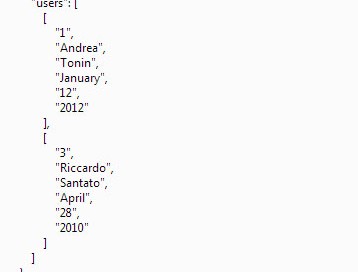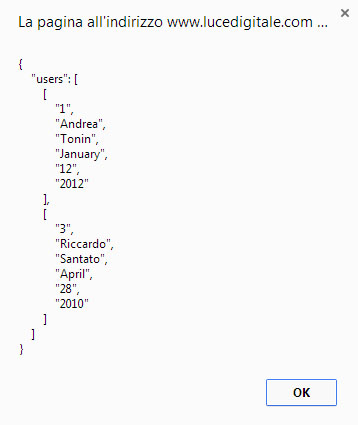MySQL – Constraints
Tested on MySQL 5.5
Constraint: NOT NULL
The NOT NULL constraint enforces a field to always contain a value. This means that you cannot insert a new record, or update a record without adding a value to this field.
CREATE TABLE PersonsNotNull ( P_Id int NOT NULL, LastName varchar(255) NOT NULL, FirstName varchar(255), Address varchar(255), City varchar(255) )
Constraint: UNIQUE
The UNIQUE constraint uniquely identifies each record in a database table
A PRIMARY KEY constraint automatically has a UNIQUE constraint defined on it
/* Create new table */ CREATE TABLE Persons ( P_Id int NOT NULL, LastName varchar(255) NOT NULL, FirstName varchar(255), Address varchar(255), City varchar(255), UNIQUE (P_Id) ) /* Create new table */ CREATE TABLE Persons ( P_Id int NOT NULL, LastName varchar(255) NOT NULL, FirstName varchar(255), Address varchar(255), City varchar(255), CONSTRAINT uc_PersonID UNIQUE (P_Id,LastName) ) /* Modify an existing table */ ALTER TABLE Persons ADD UNIQUE (P_Id) /* Modify an existing table */ ALTER TABLE Persons ADD CONSTRAINT uc_PersonID UNIQUE (P_Id,LastName) /* Drop constraint */ ALTER TABLE Persons DROP INDEX uc_PersonID
Constraint: PRIMARY KEY
The PRIMARY KEY constraint uniquely identifies each record in a database table.
Primary keys must contain unique values.
A primary key column cannot contain NULL values.
Each table should have a primary key, and each table can have only ONE primary key.
/* Create new table */ CREATE TABLE Persons ( P_Id int NOT NULL, LastName varchar(255) NOT NULL, FirstName varchar(255), Address varchar(255), City varchar(255), PRIMARY KEY (P_Id) ) /* Create new table */ CREATE TABLE Persons ( P_Id int NOT NULL, LastName varchar(255) NOT NULL, FirstName varchar(255), Address varchar(255), City varchar(255), CONSTRAINT pk_PersonID PRIMARY KEY (P_Id,LastName) ) /* Modify an existing table */ ALTER TABLE Persons ADD PRIMARY KEY (P_Id) /* Modify an existing table */ ALTER TABLE Persons ADD CONSTRAINT pk_PersonID PRIMARY KEY (P_Id,LastName) /* Drop constraint */ ALTER TABLE Persons DROP PRIMARY KEY
Constraint: FOREIGN KEY
A FOREIGN KEY in one table points to a PRIMARY KEY in another table.
It is used to prevent actions that would destroy links between tables.
Example:
“Persons” table: P_Id LastName FirstName Address City
“Orders” table : O_Id OrderNo P_Id
Note that the “P_Id” column in the “Orders” table points to the “P_Id” column in the “Persons” table.
/* Create new table */ CREATE TABLE Orders ( O_Id int NOT NULL, OrderNo int NOT NULL, P_Id int, PRIMARY KEY (O_Id), FOREIGN KEY (P_Id) REFERENCES Persons(P_Id) ) /* Create new table */ CREATE TABLE Orders ( O_Id int NOT NULL, OrderNo int NOT NULL, P_Id int, PRIMARY KEY (O_Id), CONSTRAINT fk_PerOrders FOREIGN KEY (P_Id) REFERENCES Persons(P_Id) ) /* Modify an existing table */ ALTER TABLE Orders ADD FOREIGN KEY (P_Id) REFERENCES Persons(P_Id) /* Modify an existing table */ ALTER TABLE Orders ADD CONSTRAINT fk_PerOrders FOREIGN KEY (P_Id) REFERENCES Persons(P_Id) /* Drop constraint */ ALTER TABLE Orders DROP FOREIGN KEY fk_PerOrders
Constraint: CHECK
The CHECK constraint is used to limit the value range that can be placed in a column.
If you define a CHECK constraint on a single column it allows only certain values for this column.
If you define a CHECK constraint on a table it can limit the values in certain columns based on values in other columns in the row.
/* Create new table */ /* "P_Id" must only include integers greater than 0 */ CREATE TABLE Persons ( P_Id int NOT NULL, LastName varchar(255) NOT NULL, FirstName varchar(255), Address varchar(255), City varchar(255), CHECK (P_Id>0) ) /* Create new table */ CREATE TABLE Persons ( P_Id int NOT NULL, LastName varchar(255) NOT NULL, FirstName varchar(255), Address varchar(255), City varchar(255), CONSTRAINT chk_Person CHECK (P_Id>0 AND City='Sandnes') ) /* Modify an existing table */ ALTER TABLE Persons ADD CHECK (P_Id>0) /* Modify an existing table */ ALTER TABLE Persons ADD CONSTRAINT chk_Person CHECK (P_Id>0 AND City='Sandnes') /* Drop constraint */ ALTER TABLE Persons DROP CHECK chk_Person
Constraint: DEFAULT
The default value will be added to all new records, if no other value is specified.
/* Create new table */ CREATE TABLE Persons ( P_Id int NOT NULL, LastName varchar(255) NOT NULL, FirstName varchar(255), Address varchar(255), City varchar(255) DEFAULT 'Sandnes' ) /* Create new table */ CREATE TABLE Orders ( O_Id int NOT NULL, OrderNo int NOT NULL, P_Id int, OrderDate date DEFAULT GETDATE() ) /* Modify an existing table */ ALTER TABLE Persons ALTER City SET DEFAULT 'SANDNES' /* Drop constraint */ ALTER TABLE Persons ALTER City DROP DEFAULT










